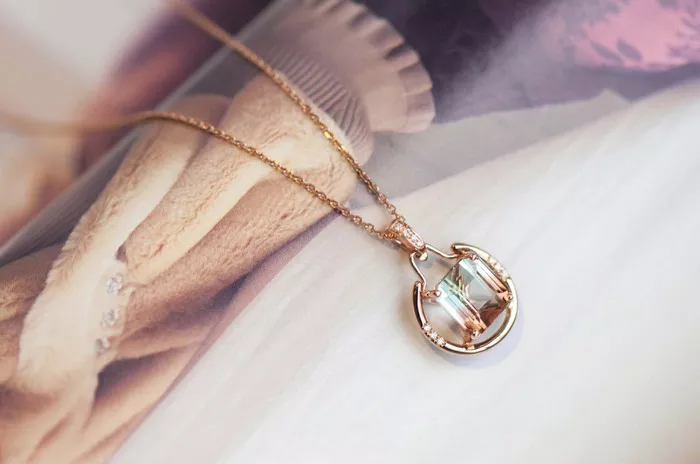White tourmaline, a lesser-known yet captivating member of the tourmaline family, is gaining attention in both the gemological community and among jewelry enthusiasts. This article delves into the unique properties, formation, and significance of white tourmaline, providing a thorough understanding of this intriguing gemstone.
What is White Tourmaline?
White tourmaline, often referred to as “colorless tourmaline,” is a variety of the tourmaline mineral group, which is known for its wide range of colors and compositions. Unlike its more colorful counterparts, white tourmaline is characterized by its transparent to translucent appearance, making it a unique choice for jewelry and decorative items.
The Chemical Composition of Tourmaline
Tourmaline is a complex boron silicate mineral with a chemical formula that varies widely depending on its composition. The general formula can be expressed as:
Where:
𝑋 can be a variety of cations (such as sodium, calcium, or lithium)
𝑌 typically includes aluminum, iron, or magnesium
𝑍 represents elements like chromium or manganese
The presence of different elements contributes to the diverse colors found in tourmaline, including the rare white variety, which lacks significant chromophores that impart color.
Physical Properties of White Tourmaline
White tourmaline shares many physical properties with its colored relatives. Key characteristics include:
Hardness: White tourmaline has a Mohs hardness of 7 to 7.5, making it relatively durable and suitable for everyday wear.
Luster: It exhibits a vitreous to resinous luster, enhancing its visual appeal in jewelry.
Cleavage and Fracture: Tourmaline has poor cleavage and typically exhibits a conchoidal fracture, which contributes to its toughness.
Specific Gravity: The specific gravity of white tourmaline ranges from 3.0 to 3.2, which is consistent with other tourmaline varieties.
Formation and Occurrence
White tourmaline forms in igneous and metamorphic rocks, often in granitic pegmatites. These formations occur when magma cools slowly, allowing large crystals to develop. The presence of boron, which is essential for tourmaline formation, typically comes from the surrounding rocks or fluids.
Notable deposits of white tourmaline can be found in locations such as Brazil, Afghanistan, and parts of the United States. The mineral is often associated with other gemstones, including quartz and feldspar, which can enhance its aesthetic appeal when set in jewelry.
The Significance of White Tourmaline
Cultural and Historical Context
Throughout history, tourmaline has been revered for its supposed metaphysical properties. White tourmaline, in particular, is believed to promote clarity of thought, enhance communication, and provide a sense of calm. These attributes make it a popular choice among crystal enthusiasts and those seeking spiritual growth.
In various cultures, white gemstones are often associated with purity and innocence. White tourmaline, with its pristine appearance, aligns well with these themes, making it a favored choice for bridal jewelry and other significant life events.
Modern Uses and Applications
In contemporary jewelry design, white tourmaline is increasingly used as an alternative to more traditional white gemstones like diamonds. Its unique properties and affordability make it an attractive choice for engagement rings, pendants, and earrings.
Moreover, white tourmaline is sometimes used in holistic practices, where it is believed to help balance the body’s energy and promote emotional healing. Its aesthetic appeal combined with its purported metaphysical benefits contributes to its growing popularity.
See Also: What is Green Tourmaline?
Comparison with Other White Gemstones
When considering white tourmaline, it is essential to compare it with other white gemstones to appreciate its unique qualities:
Diamond: While diamonds are the most sought-after white gemstones, they are significantly more expensive and harder than white tourmaline. Diamonds also have a higher refractive index, resulting in more brilliance.
White Sapphire: White sapphires are another alternative, offering a similar appearance to diamonds but at a lower price point. However, they lack the unique properties of tourmaline, such as its ability to be found in various colors.
Moissanite: Known for its exceptional brilliance, moissanite is often used as a diamond substitute. However, it is synthetically produced, whereas white tourmaline is a natural gemstone.
Care and Maintenance of White Tourmaline
To ensure the longevity of white tourmaline jewelry, proper care and maintenance are essential:
Cleaning: Use a soft cloth and mild soap with water to clean white tourmaline. Avoid harsh chemicals or ultrasonic cleaners, as they can damage the stone.
Storage: Store white tourmaline separately from other gemstones to prevent scratching. A soft pouch or a lined jewelry box is ideal.
Avoiding Hard Impact: While white tourmaline is relatively durable, it is advisable to avoid exposing it to hard impacts that could cause chips or fractures.
Conclusion
White tourmaline is a captivating gemstone that offers both aesthetic and metaphysical benefits. Its unique properties, combined with its affordability and versatility, make it an excellent choice for jewelry enthusiasts and those interested in the spiritual aspects of gemstones. As awareness of this beautiful stone continues to grow, it is poised to become a staple in the world of gemology and jewelry design.
In summary, white tourmaline stands out not only for its beauty but also for its rich history and significance in various cultures. Whether worn for its visual appeal or its purported healing properties, white tourmaline is indeed a gem worth exploring further.


